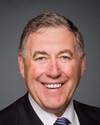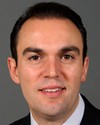Thank you, Madam Chair.
Before I bring forward a couple of questions, let me honestly congratulate you for the Herculean effort that has gone in over this past while in response to the western hemisphere travel initiative.
Like most members of Parliament, we were under a pile of pressure back in our ridings because things were almost disastrous from the point of view of normality. From being around this place quite a bit of time now, I can say that change is a very difficult thing to bring about in a short period of time in the behemoth operation we have here. So for you to accomplish what you did in that short period of time to dramatically reduce those waiting lists, I want you to know that I'm appreciative and I know a number of my colleagues thank you for the efforts you have made.
While we give you a pat on the back that way, there's always the other side of the coin that we want more, we want better, and that's a public demand. But I do want it on the record that when we look at the waiting lists, we were at six, eight, or sometimes even ten weeks, and now it has been brought right back down to a normal rate. A lot of things had to go right; a lot of effort went in, and a lot of organization. So thank you to everybody involved, certainly on my behalf and on behalf of, I know, a number of members on all sides of the House.
I still have a number of concerns. What do you have as a rejection rate, when applications go in and they're turned back? Do you find a difference in rejection rates from various sources, or do you even track it?
The point I'm trying to get at here is that I have a number of people who will pick up an application, whether it's from Service Canada or the post office, and in it goes. A lot of times it's rejected for the simplest little thing, one of the reasons for adequate rejection, but it doesn't go through that trial and error or that little second guess.
When they come to our office, we do that little second check. I suppose maybe it isn't what's expected, but we do have a double-check system, and then we have a very minimal rejection rate.
Do you have any figures on rejection rates?





